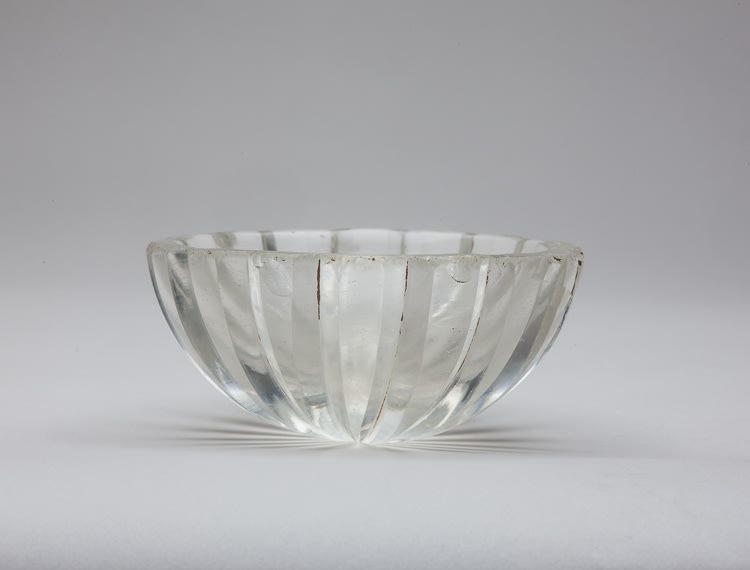Fatimid Small Rock Crystal Vessel, 11th Century CE - 12th Century CE
Glass
6 x 11.7 cm
OF.197
The wealth and material prosperity enjoyed by Fatimid Egypt and Syria is reflected in the opulence of the arts of this period, as Fatimids evidently had a taste for intricately...
The wealth and material prosperity enjoyed by Fatimid Egypt and Syria is reflected in the opulence of the arts of this period, as Fatimids evidently had a taste for intricately carved vessels of rock crystal.
As a very rare medium of art, rock crystal consists of pure quartz crystals, exclusively shaped and polished by masterful craftsmen.
The purest crystals were imported from Basra, Yemen and the islands around the East African Coast and rock crystal translucency was considered so remarkable a property that rock-crystal was sometimes known as Busaq al-qamar, or ‘Spirit of the Moon’.
Great skill was required to hollow out the raw rock crystal without breaking it and to carve the delicate shape and decoration.
Small rock crystal bowl carved from single block of rock crystal and finished to an exceptional standard; of vaguely elliptical form with fluting to the lower body, angular shoulder and slightly everted neck
The bowl has no identifying inscription and would have possibly been used as a basin for liquids.
Objects made of rock-crystal were often credited with magical properties or salutary benefits, and it was believed that by simply holding a vessel made of rock crystal, an individual’s craving for water was considerably reduced. It was also thought that rock crystal glasses were supposed to shatter on contact with poisoned liquids, or that a poisoned liquid would changed colour, which is perhaps why such items they were so popular with rulers.
OF.197
